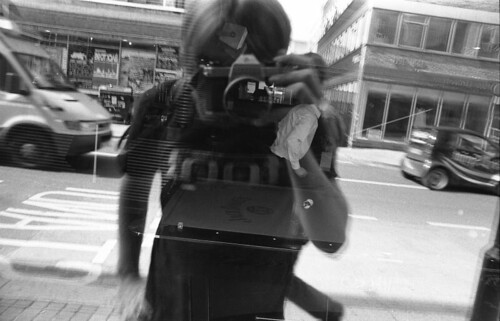This reminds me. When I look at this Bruegel painting I can't help but to think...

... that the framing is sort of not perfect. There are chopped trees at both sides and even the people are in a slightly non-optimal position and they are slightly cropped also at the bottom. There are multitude of small scenes and actions going on, just like in daily life. I just guess that the framing and choice of the scene is for enhanced realism.
If we now compare with a photograph by Henri Cartier-Bresson depicting a similar snowy and populated scene...

... well, somehow the composition tries to imitate paintings and it's more clean than Bruegel's. Just because it being a photograph brings the realism that the painter tried to achieve? So painters imitated life, and photographers imitated painters? Aren't we missing something here?

4 comments:
And I wonder if the reproduction of the Breugel is missing a couple of millimetres at one or more edges... the reproduction here seems to have more space at the bottom (the lower left skater has a reflection) which seems to improve the framing for me.
Yep, there's a bit more in the bottom, but I've not been able to find more at the sides...
An interesting comparison. And, an interesting fact that the sub-optimal framing turns out to be caused by a crop of the original painting.
The main difference between photography and paintings is that a photographer works with real time and space, while the painter works with imaginary time and space. No matter how hard either one tries, this distinction cannot be overcome. This is, I think, the defining feature of photography as an art form. That's why too much photoshop turns a photograph into a digital painting.
Compositionally, I don't think there is much difference between photography and painting, though, so I am not sure how much sense it makes to talk about compositional imitation.
I think that the closest photography has come to imitating painting is through using low-detailing optics, like pinhole and monocular, and using optical and motion blurs.
@arcady: still the sides of the painting are messier than the photograph's. I was not that much hinting at whether photography imitates painting or not (some does, some tries not to), but to how the constrains on obtaining realism are different for both. It's easy to create a 'trustable' photograph, but to create a 'trustable' painting you might need to add some additional noise to it. Tomorrow I'll post on how painting imitates photography ;-)
Post a Comment